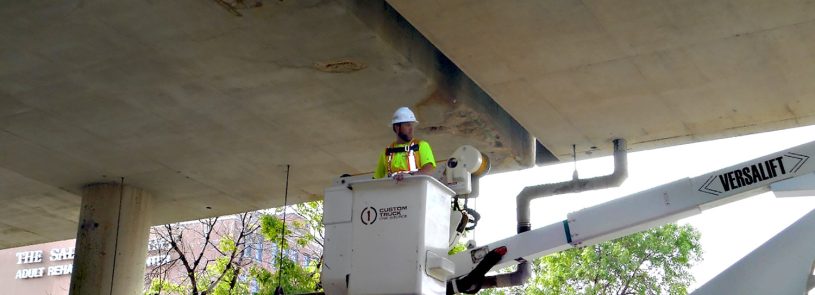How to extend the life of your bridges

By Steven Myer
There are more than 617,000 bridges in the U.S., all of which are inspected by qualified bridge inspection team leaders every two years. According to federal data, one in three are structurally deficient—in need of repair or replacement. A total of 42,951 (6.9%) of them are rated in poor condition.
Structurally deficient doesn’t necessarily mean unsafe. According to a federal government definition, revised in 2018, a bridge is structurally deficient if the deck, superstructure (girders), substructure (piers and abutments), or culvert condition is rated at 4 (poor) or less. Many of these bridges can still be used, however. In addition, during these biennial inspections, each bridge is given a sufficiency rating from zero to 100, with 100 being a pristine bridge. This rating is another sign of the service life left in the bridge. As bridges deteriorate, the weight the bridge can carry (load rating) is decreased and a weight limit sign must be posted.
Repairing or replacing every structurally deficient bridge in the U.S. would cost approximately $191 billion, according to ASCE’s 2025 infrastructure report card. But strategic asset management planning and routine maintenance can extend the life of a bridge that’s in fair condition (rated 5 or 6) but trending toward a poor condition. It also can save money in the long run to properly maintain and repair bridges rated in good condition (rated 7 to 9).
While it’s often difficult to find the time and money for maintenance, preservation and rehabilitation projects can fix deteriorating components and stave off some of the deterioration.
Focus on “fair”
Preservation and rehabilitation projects targeted at bridges rated in fair condition (scoring a 5 or 6) or good (scoring a 7 to 9) will bring the biggest bang for your buck. These bridges are at risk of continued deterioration and being downgraded to structurally deficient and/or a poor rating. The key is focusing on the ones with enough service life left in them to be worth the investment.
There is a point of diminishing returns. When we do a preservation or rehabilitation project on a bridge, we want a minimum of 20 years of service life out of that bridge. Some states set a ceiling for project costs. If a rehabilitation project is estimated to cost 60% or more than the estimate of a replacement project, the rehabilitation project is rejected and a replacement project is started.
Preservation projects
Preservation projects are used to improve components (like the deck or girders, etc.) of a bridge that are starting to deteriorate. Typically, these projects will not improve the load rating of a bridge. If a bridge is posted, a preservation project will not, in many cases, remove those weight restrictions.
Examples of preservation projects include:
- Patching deteriorated concrete
- Polymer chip seal overlay
- Low slump dense concrete overlay
- Deck replacement
- Joint repair
- Girder repainting
Rehabilitation projects
Rehabilitation projects are like preservation projects but are used to improve the load rating of the bridge. This may result in the removal of the weight restrictions.
Examples of rehabilitation projects include:
- Superstructure replacement
- Bearing replacement
- Bridge deck widening
- Structural repairs
Emergency repair projects
There are times bridges are damaged by environmental factors (ice floes), vehicular damage (over-height trucks striking girders), or deterioration (cracks in steel girders) and need to be repaired as soon as possible.
Examples of emergency repairs include:
- Bolted girder splices
- Girder heat straightening
- Girder replacement
- Berm repairs
Keeping up with maintenance and repairs can be difficult, but in the long run, it will extend the life of the bridge and delay the more costly expense of replacement.
Learn more about IMEG’s work with bridges in this podcast.












